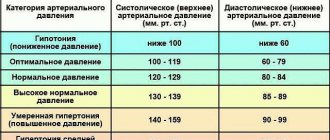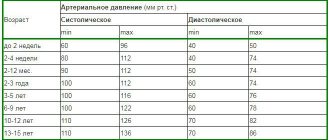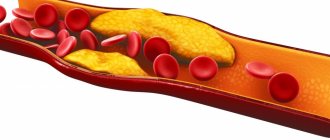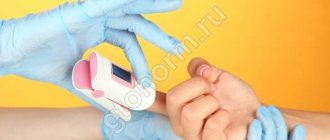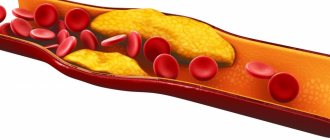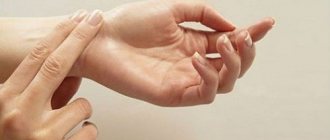Changes in blood pressure (BP) in adults do not surprise anyone; similar problems in children worry everyone. Moreover, deviations from the norm occur not only in adolescents, but also in infants. A young body has elastic vascular walls, which is why blood pressure in babies is lower. A newborn's systolic pressure is about 75 mm Hg. As the baby grows, it gradually increases.
The age of the child determines the degree of elasticity of the vascular wall, the width of the lumen of the arteries and veins, and the total area of the capillary network, on which the normal blood pressure in children depends.
Medical practice notes a significant drop in blood pressure in infants under one year of age. Every month in babies it grows by 1 mm Hg. Art.
From one to 6 years of age, blood pressure increases slightly. Around the age of five, its indicators level out for both sexes; subsequently, boys have slightly higher blood pressure than girls. From 6 years of age until adolescence, systolic blood pressure increases again: in boys - by 2 mm. Hg Art., in girls - by 1 mm Hg. Art.
Blood pressure - a general concept
The blood flow system in the body is the heart and blood vessels. They are filled with blood, which provides nutrients and oxygen to organs and tissues. The main role in this system is given to the heart - the natural pump that pumps blood. When it contracts, it releases blood into the arteries. The blood pressure in them is called arterial.
By blood pressure, doctors understand the force with which the blood acts on the vessels. The larger their Ø, the higher the blood pressure. By pushing blood in portions into the circulatory system, the heart creates the corresponding pressure. Normal blood pressure is important for metabolic processes, since all nutrients are transported to the organs with the blood and waste and toxins are eliminated.
There are two types of blood pressure - systolic, associated with the work of the heart, cardiac output, and diastolic, which depends on vascular tone. Systole and diastole are phases of the cycle. The first parameter characterizes the period of muscle contraction, when pressure increases to a maximum, the second – the period of relaxation and decrease in blood pressure. The pressure in the vascular system is not the same; in particular, it is higher in the arteries than in the veins.
Ways to control pressure
Direct and indirect methods of blood pressure control are used. An invasive method is necessary during surgery, when a probe and sensor are inserted into the artery. Non-invasive methods are compression options:
- Palpation is the most complex method, requiring certain skills. When pressing the artery with your fingers, it is important to catch the moment of maximum and minimum pulse in the area that is located below the compressed area.
- The auscultatory method of surgeon Korotkov has been a standard technique since 1905 to this day. It involves the use of a tonometer, pressure gauge and stethoscope.
- The oscillometric method underlies the operating principle of most automatic tonometers. It makes it possible to check blood pressure on the shoulder, knee, and wrist.
- Doppler ultrasound determines only systolic blood pressure using ultrasound. It is used more often for newborns and infants.
Modern tonometers allow children to measure blood pressure at home without special medical training. And yet, children need to know the basic rules for measuring blood pressure.
Diagnosis of pathology
The following methods are used to detect arterial hypotension:
- ECG;
- ECHO-KG;
- EEG;
- clinical and biochemical blood tests (indicators of cholesterol, glucose, etc. are important).
The pressure is measured by a specialist three times and a cuff is selected according to age. Therefore, it is highly not recommended to independently diagnose a child and begin self-medication based on the readings of a home blood pressure monitor. Reduced numbers when measured should only be a reason for rechecking with a pediatrician.
During diagnosis, the child may be prescribed 24-hour blood pressure monitoring. This is a very informative study that can identify pathology at an early stage.
How to measure blood pressure in children correctly
It is best to measure your child's blood pressure in the morning. It is important that he is in a calm state and should not have any stress before the procedure. It is better to measure an hour after eating or walking, if the baby is not cold. It is worth taking him to the toilet before the procedure.
If measurements are taken for the first time, you need to check two hands in order to subsequently take measurements where the result was higher. Measuring blood pressure in children has its own characteristics. Children under 2 years of age are usually measured while lying down. An older baby can sit. The hand prepared for measurements does not hang, but lies on a side table parallel to the body, palm up. The legs should also be on a stand if the chair is not tall enough. A prerequisite is that the angle between the shoulder and the hand must be straight (about 90º).
The features of the measurement technique are described in detail in the instructions for the tonometer and consist mainly in selecting an accurate cuff. If you use cuffs for adults, the result will be inaccurate. This is especially true for young children. Correct results can only be obtained if the cuff corresponds to ¾ of the distance from the elbow to the armpit. They put it on the forearm and secure it with Velcro. The gap should be such that an adult’s finger can fit between the cuff and the skin. After fixing the cuff according to all the rules, air is pumped using a bulb. Then this air is released by pressing the valve.
A phonendoscope is also used to measure blood pressure. It is applied to the hole on the inside of the elbow of the child’s arm. After applying the phonendoscope, you should try to note the beginning of the pulsation after deflation and the last beat of the pulse. The first beat indicates the upper blood pressure level, the last – the lower limit.
To calculate the normal systolic pressure, you need to double the age and add 80 to the product. Diastolic blood pressure should be from ½ to ⅔ of the upper blood pressure value. For accurate calculations, you can use a special formula. For example, for a five-year-old child, you need to make the following calculations: 5 * 2 + 80 = 90 mm Hg. Art. the norm of lower pressure is defined as half or ⅔ of this parameter - from 45 to 60 mm Hg. Art. Normal blood pressure for a particular child will depend not only on age, but also on a number of other factors:
- Builds;
- Activities of metabolic processes;
- Moods;
- Overeating;
- Fatigue;
- Quality of sleep;
- Genetic predisposition;
- Unfavorable weather.
Normal blood pressure in a child and features of its changes: table
Blood pressure values in children - table by age:
| Age | Blood pressure, mm Hg. st | |||
| Systolic | Diastolic | |||
| minimum | maximum | minimum | maximum | |
| 0-2 weeks | 60 | 96 | 40 | 50 |
| 2-4 weeks | 80 | 112 | 40 | 74 |
| 2-12 months | 90 | 112 | 50 | 74 |
| 2-3 years | 100 | 112 | 60 | 74 |
| 3-5 years | 100 | 116 | 60 | 76 |
| 6-9 years | 100 | 122 | 60 | 78 |
| 10-12 years | 110 | 126 | 70 | 82 |
| 13-15 years old | 110 | 136 | 70 | 86 |
Table with heart rate norms in children:
| Child's age | Average heart rate, beats/min. | Normal limits, beats/min. |
| 0-1 month | 140 | 110-170 |
| 1-12 months | 130 | 102-162 |
| 1-2 years | 124 | 94-154 |
| 2-4 years | 115 | 90-140 |
| 4-6 years | 106 | 86-126 |
| 6-8 years | 98 | 78-118 |
| 8-10 years | 88 | 68-108 |
| 10-12 years | 80 | 60-100 |
| 12-15 years | 75 | 55-95 |
Normal blood pressure: infant up to one year
An elastic vascular bed and a dense network of capillaries are the main reasons that infants have much lower blood pressure than their parents. A newborn's blood pressure readings are 60-96/40-50 mm Hg. Art. As the wall tone strengthens, blood pressure also increases; by the end of the first year it ranges from 80/40 to 112/74 mm Hg. Art., taking into account the weight of the baby.
If you don’t have data on blood pressure in children at hand (the norm is in the table), you can use the following calculations for orientation: 76 + 2 n, where n is the baby’s age in months. For newborns, the width of the baby cuff chamber is 3 cm, for older infants – 5 cm. The procedure is repeated 3 times, focusing on the minimum result. In infants, only systolic blood pressure is checked, determined by palpation.
Normal blood pressure: baby 2-3 years old
After a year, the increase in blood pressure slows down. By 2-3 years, the average upper pressure is at the level of 100-112 mm Hg. Art., lower – 60-74 mm Hg. Blood pressure can be considered above normal limits if an alarming result persists for 3 weeks. Formula to clarify the norm: systolic blood pressure – (90 + 2n), diastolic – (60 + n), where n is the number of full years.
Normal blood pressure: child 3-5 years old
Studying the parameters of the table, it is easy to notice that from 3 to 5 years the dynamics of blood pressure growth slows down. Systolic blood pressure in such children is 100-116 mm Hg. Art., diastolic – 60-76 mm Hg. Art. It should be taken into account that the tonometer data does not coincide throughout the day: during daylight hours they reach a maximum, at night they fall, and after midnight, until 5 o’clock, they are minimal.
Blood pressure norm: schoolchild 6-9 years old
From the tabular data it is clear that the minimum pressure indicators remain at the same positions, only the highest parameters are slightly increased. The age norm is 100-122/60-78 mm Hg. Art.
The beginning of school life is characterized by deviations, as the child’s lifestyle changes. After unusual emotional stress and a reduction in physical activity, children complain of fatigue, headaches, and are capricious. It is important to be attentive to the child’s condition during this period.
Normal blood pressure: teenager 10-12 years old
The initial period of puberty is characterized by changes in blood pressure. This applies to a greater extent to girls who are ahead of the stronger sex in the rate of physical development.
Despite average blood pressure values from 110/70 to 126/82 mm Hg. Art., doctors consider the upper limit to be 120 mm as normal. Hg Art. This indicator also depends on the body type: tall and thin asthenics usually have lower blood pressure compared to their peers of the athletic type.
Normal blood pressure in boys and girls 12-15 years old
Adolescence presents teenagers and their parents with many surprises. High workloads at school, hours spent at the computer, stress, and unstable hormonal levels can provoke both hypertension and hypotension.
Normally, the table shows pressure in children closer to adult values: 110-70/136-86 mm Hg. Art., since by the age of 12 the vascular system has already completed its formation. With changes, tachycardia, fainting, changes in heart rate, headaches and dizziness are possible.
With age, ailments usually go away; in order to exclude undesirable consequences, it would not be superfluous to undergo an examination.
Change in indicators at 7-8 years
For children at this age, “jumps” in blood pressure are more often associated with increased psychological stress and high loads. Mostly they complain about feeling unwell after school, attending a club or section. According to medical statistics, in children seven years of age and older who study in specialized schools (mathematics, language, physics and mathematics), hypertension is diagnosed five times more often, and the blood pressure norm according to the table does not correspond. Such indicators are associated with high loads and insufficient rest.
Complications of pressure changes in children
Doctors have a concept - target organs. This is the name given to the organs that suffer first. Usually there are problems with the heart (coronary disease, myocardial infarction), problems of the central nervous system, brain (stroke), damage to the organs of vision up to blindness, and renal failure. The danger is that arterial hypertension in children is usually asymptomatic.
A child, especially a small one, does not complain about his health. Certain signs appear that parents must pay attention to. Many of them are similar to the causes of hypertension in adults.
- Headache;
- Nosebleeds;
- Nausea, vomiting;
- Weakness, fatigue;
- Neurological manifestations: convulsions, paresis, paralysis;
- Visual impairment;
- Change in gait.
If a child faints, you should definitely show him to the pediatrician. The doctor will refer you to a specialist for further examination.
Arterial hypertension has a hereditary component: if there are hypertensive patients in the family, the child’s blood pressure must be periodically monitored, since 45-60% of them have a family history. For a child to become hypertensive, it is necessary to be exposed to modifying factors: stress, unhealthy diet, physical inactivity, and sports overload.
If relatives have a variant of hypotension, then low blood pressure may be an individual version of the norm for the child. Low blood pressure can be adaptive in nature, for example, in athletes or those who travel to high altitudes. This option is rather an exception, because symptoms of low blood pressure can also indicate heart defects, myocarditis, endocrine disorders (thyroid problems, adrenal insufficiency are associated with low blood pressure).
Treatment
Most often, high blood pressure in children occurs due to the presence of other diseases. Usually, simple symptomatic treatment gives only a temporary result, which can lower blood pressure only for a short period.
Sedatives
In the presence of vegetative-vascular pathology, doctors prescribe treatment with sedatives such as Seduxen, Elenium with valerian and bromine. Also, to normalize the daily routine, parents and their children need to take regular walks outside, in places where there are no exhaust gases. Low blood pressure in a child causes symptoms that include a feeling of loss of strength. Therefore, large physical activity is contraindicated for children with vegetative-vascular distance.
Sometimes teenagers have isolated high blood pressure. Its symptoms include rapid breathing. In case of isolated high blood pressure, it is forbidden to do heavy exercises and the child is partially exempted from physical education lessons.
Adrenergic blockers
High blood pressure is treated with medications such as beta blockers, such as Inderal or Obzidan. In addition, if you have high blood pressure, you can get rid of the symptoms by taking labetolol. On the contrary, excessively low blood pressure can also result from an overdose of such medications.
In addition, high and low blood pressure can be treated with patented agents such as rauvasan, reserpine and raunatin. Before using medications, parents should be sure to find out what dosage is for each of these drugs.
How to normalize blood pressure in children
Elevated blood pressure is observed in 13% of children. This is due to inadequate load on the heart muscle, high arterial tone, and vascular spasms. There are primary and secondary hypertension. The first form is caused by changes in hormonal levels, stress that is unbearable for the child’s psyche, lack of sleep, overload at the computer or in the sports section, and conflicts with peers. In addition to external reasons, there are also hidden factors: heart and kidney failure, problems with the endocrine system.
Secondary hypertension is provoked by severe diseases of the kidneys, heart, endocrine and nervous systems, intoxication, and head trauma. In the context of such disorders lie formidable pathologies: pituitary tumor, narrowing of the renal artery, adrenal tumors, osteoporosis, heart defects, encephalitis.
Hypotension in children can be physiological or pathological. Low blood pressure affects 10% of children. Physiological prerequisites can be hereditary (body constitution, genetic predisposition to hypotension) and external (excess oxygen, unfavorable weather conditions, inadequate physical activity) reasons. Pathological hypotension is provoked by:
- Respiratory infections;
- Bronchitis, tonsillitis with complications;
- Stress and mental disorders;
- Physical overload or its complete absence;
- Vitamin deficiency, anemia;
- Birth trauma, allergies;
- Diabetes;
- Thyroid problems;
- Heart failure.
To normalize blood pressure in children with hypotension, you need to control the amount of fluid consumed, adjust the salt level, you can use tea, coffee, echinacea, Chinese lemongrass, pantocrine, and eleutherococcus extract. Establish a rest and study routine.
If there is a psychotraumatic situation, consultation with a psychologist is necessary. With high blood pressure, it is also necessary to control the work and rest schedule, the psycho-emotional state of the child, and a comfortable environment in the family. Popular herbal tinctures also help - valerian, motherwort, peony.
Blood pressure norms in children are a relative concept. If the child is worried, the tonometer may show an inflated result. In this case, you need to measure the pressure again. The objective result will be 3-4 measurements with an interval of 5 minutes. For a healthy child, there is no need to measure blood pressure frequently, but if the baby gets sick or is hospitalized, the pressure must be monitored; it is advisable to keep a special diary.
Regular physical activity improves blood flow and normalizes blood pressure. Come up with a fun exercise with your children, do it in a playful way, and a sea of positive emotions is guaranteed.
Blood pressure is an important parameter of a child’s health, but not the most important one. So take it without brutal seriousness. Blood pressure is a variable thing, capable of fluctuating throughout the day, depending on mood and physical activity. The main thing is that the child is healthy and does not give rise to constant blood pressure monitoring.

